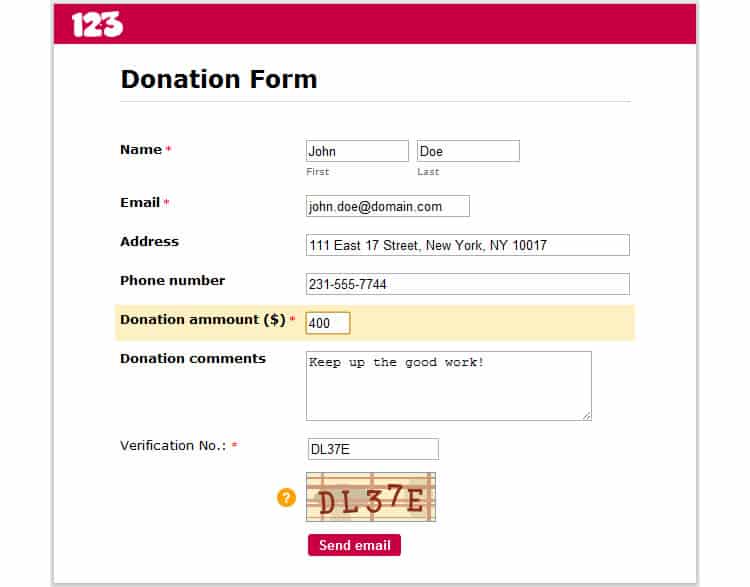
You may have a revolutionary idea for the next big app. However, without the right funding for your winning app, that idea will probably never see light of day.
Unlike a business startup, where the entrepreneur knows exactly what he or she’s going to do, what products or services will be offered and how, what will be the monetization model, etc., app developers have little idea about any of these at the initial stages of building the app. User testing throws up curve balls that often call for drastic changes. Most apps go through so many modifications and iterations that the final product will look radically different from the initial idea. For this reason, creating a bound business plan and approaching banks for loans becomes really tough.
So what do you do? Here are a few thoughts to get you started.
1. Bootstrap Your Way Up with Co-Founders
There is no source of funds more dependable than your own savings. If you cannot spare cash to invest in your own bright idea, asking others to contribute to it is a little unfair, don’t you think? Bank savings, personal loans, credit card loans, friends and family are all perfectly legitimate sources of funds when your app is in its infancy. However, you don’t always have to go it alone.
Find the perfect co-founder to shoulder the responsibility of launching a new app. A co-founder is a lot more than a friend or shoulder during bad times. Pick a co-founder based on your needs. A tech-savvy co-founder can help you design and build a prototype of your app from scratch without spending a penny on outside developers. Bobby Murphy, co-founder of Snapchat was the development brains behind what was essentially Evan Spiegel and Reggie Brown’s Stanford classroom project. Currently the app stands valued at close to $20 billion.

Alternately, find a partner who can fund your app while you develop it yourself. Case in point – Uber. Travis Kalanick was the cash supply for developer/co-founder Garrett Camp.
2. Set up a Crowdfunding Campaign
Crowdfunding is an attractive funding avenue for startups that have absolutely no resources of their own to get going with their ideas. Even though hundreds of app and startup ideas go unnoticed and unfunded on crowdfunding sites, the right pitch can promise a bonanza for your dream app. In return for a service fee from the crowdfunding platform and a transaction fee from the payment processor, you are assured of sufficient funds to get your dream off the ground.

Crowdfunding has various models that you can pick from. The leader in the crowdfunding space, Kickstarter, is an all or nothing platform. This means that once you set your funding goal, you better reach the target amount to get the money. If you fall short of your target, the contributions get refunded to the individual investors. On the other hand, Indiegogo offers both flexible funding and fixed funding options, thus meaning that if you fail to reach your target amount, you can keep your collection in return for a higher service fee. You may also want to consider app-specific crowdfunding platforms like AppsFunder and AppSplit.
3. Raise Donations on Your Own Site
Crowdfunding is a great way to get quick resources. However it also has quite a few negatives tacked on to it. There’s tons of competition out there and standing out from a sea of wannabe entrepreneurs can be near-impossible for many. Then there are the myriad of fees that you shell out in return for the funding that you request.
A smart way to eliminate these problems is by raising funds on your own site. Yes, nothing stops you from:
- Describing your proposed app to your readers
- Asking them for a small donation towards your app
- Offering them a gift / pre-orders of your app / monetary compensation once your app rolls out in return for their contributions
A tool like 123ContactForm allows you to build a donation form in minutes. Even better, it integrates easily with various payment processors like PayPal, Stripe, Braintree and FreshBooks to make the process of setting up your self-owned own funding campaign a one-stop affair.

4. Participate in Funding Contests
If you’re a would-be entrepreneur in the connected world, there’s no way you’ve not seen the entrepreneurial TV series Shark Tank. With over $44 million in funding given out across its five seasons, the hit show is an entrepreneur’s dream come true.

I am not suggesting that you try and get on Shark Tank to get your app funded. You should if you can, but that’s not the point here. There are tons of contests available sponsored by universities, technology companies, angel investor networks and more that offer new entrepreneurs the resources to fulfill their business idea. Check out Biz Plan Competitions to pick from hundreds of contests around the world. You can even zoom in on a contest near you and learn about how to qualify and participate to win the funding that your app deserves.
5. Angel Investors and Strategic Partners
Many startups are tempted to approach Venture Capitalists (VCs) for seed funding. However, the fact remains that less than 3% of seed funding comes from VCs. Instead, angel investors or strategic investors are strong contenders for kick starting your brand new app.
These are not always companies or institutions. Individuals and successful entrepreneurs often take an active interest in funding new startups. Amazon’s Jeff Bezos and Yahoo’s Marissa Mayer are but two examples of avid angel investors in early stage apps. Angel investors can offer anything from $25,000 to a few million in funding, depending on your app idea and stage of development. The size of the angel investment market currently stands at $20 billion annually.

While angel investors are easier to convince than VCs at a seed stage, you still need to be prepared to give a potential angel investor details like:
- The total amount of capital you will need
- How quickly will you burn through it (monthly burn rate)
- What is your go-to-market strategy
- How will you promote the app
- Why do you deserve funding, that is, the technical and business capabilities of the founders
Coda
It’s not just you. Before Peter Thiel stepped in with the first external funds that Facebook would receive, Mark Zuckerberg and Eduardo Saverin managed their operating costs by hustling for every last dollar. The monthly expense of $85 for renting their very first server was covered by banner ads on Facebook using platforms like AdSense.
Moral of the story? With a little bit of creativity, you can always make sure that your dream app doesn’t remain only in your dreams.
Want to learn more?
If you’re interested in the managerial and strategic aspects of UX, then consider to take the online course on UX Management and Strategy. If, on the other hand, you want to brush up on the basics of UX and Usability, then consider to take the online course on User Experience (or another design topic). Good luck on your learning journey!
(Lead image: Depositphotos)
